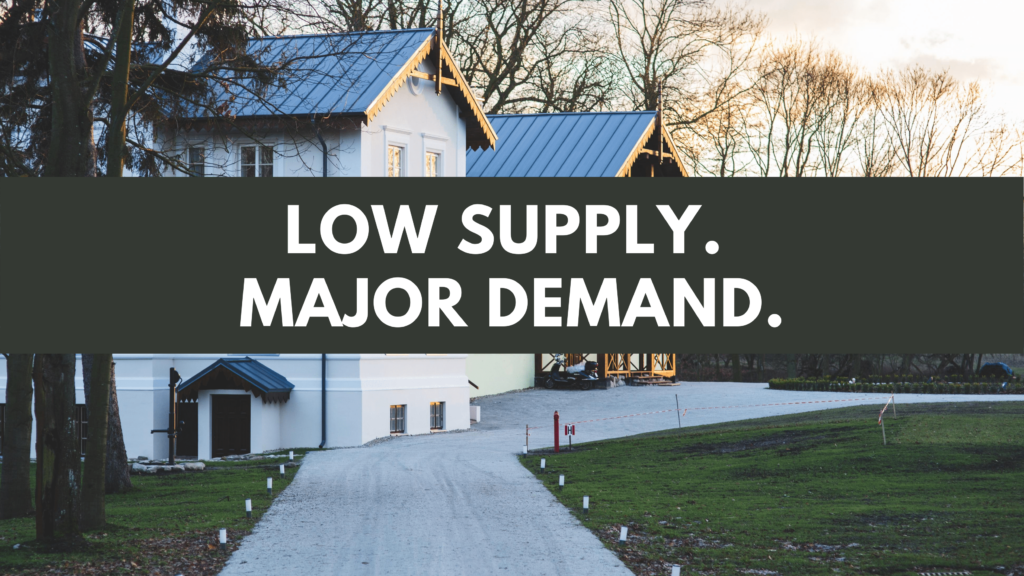Supply and demand are the best methods when trying to predict the path forward for the real estate market. The current health crisis has caused many would-be sellers to hold off on putting their properties on the market.
The National Association of Realtors reports that existing home sales fell 17.8% in April, but pending home sales rose 44.3% in May. Every major region experienced an increase in pending home sales.
Listings are increasing as the economy begins to recover.
Supply of Homes on the Market
When there is over a six-month supply of homes on the market, it’s considered a buyer’s market, as prices begin to depreciate. Unsold home inventory stood at 4.8 months at the end of May.
The market ahead is in favor of sellers and is considered balanced when there is a six-month supply of homes available. It’s a good time to put your home on the market if you’re planning on selling your home.
Over the last decade, the market has been in favor of the seller, except for 2010 and 2011. Since then, housing inventory has remained below the 5-month supply, with housing prices appreciating.
The housing market is in an exceptional position, as the economy is expected to recover in the latter end of 2020. Housing is underbuilt at this time, putting upward pressure on home prices. Housing deficits may be as high as one million units.
Buyers are willing to do the following when demand is higher than supply:
- Place higher bids on a home and enter bidding wars
- Make offers that are closer to the seller’s asking price
- Are more willing to overlook concerns with a home (to some extent)
If you’re buying your home, be prepared for multiple bids and potential bidding wars. The market remains strong, even as the economy is experiencing a slowdown.
Experts are also updating their forecasts for home prices for the 2021 and 2022 years.
Expert Housing Price Forecasts Indicate Rising Home Prices
Five main sources project housing prices will rise at varying degrees. The five main sources projecting housing price increases are:
- Fannie Mae
- Freddie Mac
- Mortgage Bankers Association
- National Association of Realtors
- Zelman & Assoc
For the rest of 2020, housing prices are projected to appreciate between 0.4% and 4.3%, with Freddie Mac and Fannie Mae projecting just a 0.4% rise in prices. The 2021 year is projected to have housing prices rise by 0.7% to 4.2%.
Only two sources have released their projections for 2022:
- Mortgage Bankers Association projects housing prices will rise 2.4% in 2022
- Zelman & Assoc projects housing prices will rise 4.6% in 2022
The projections are likely to be revised before the end of the year. A lack of inventory is likely to push prices higher through the 2022 year.
Housing has remained largely unfazed by the recession, albeit a lower supply in April may indicate that potential sellers were initially reluctant to put their homes on the market. May’s housing market upswing shows that the reluctant sellers may have been short-lived and ready to put their houses up for sale.
In past recessions, housing prices fell 10% in the early 90s and 30% in the 2007 – 2009 recession. This recession, primarily due to low housing inventory, may be different.
An economic slowdown comes with a lot of uncertainties, but if experts are correct, the lack of housing inventory my push housing prices higher. Real estate may even help play a major role in the economy’s recovery.
